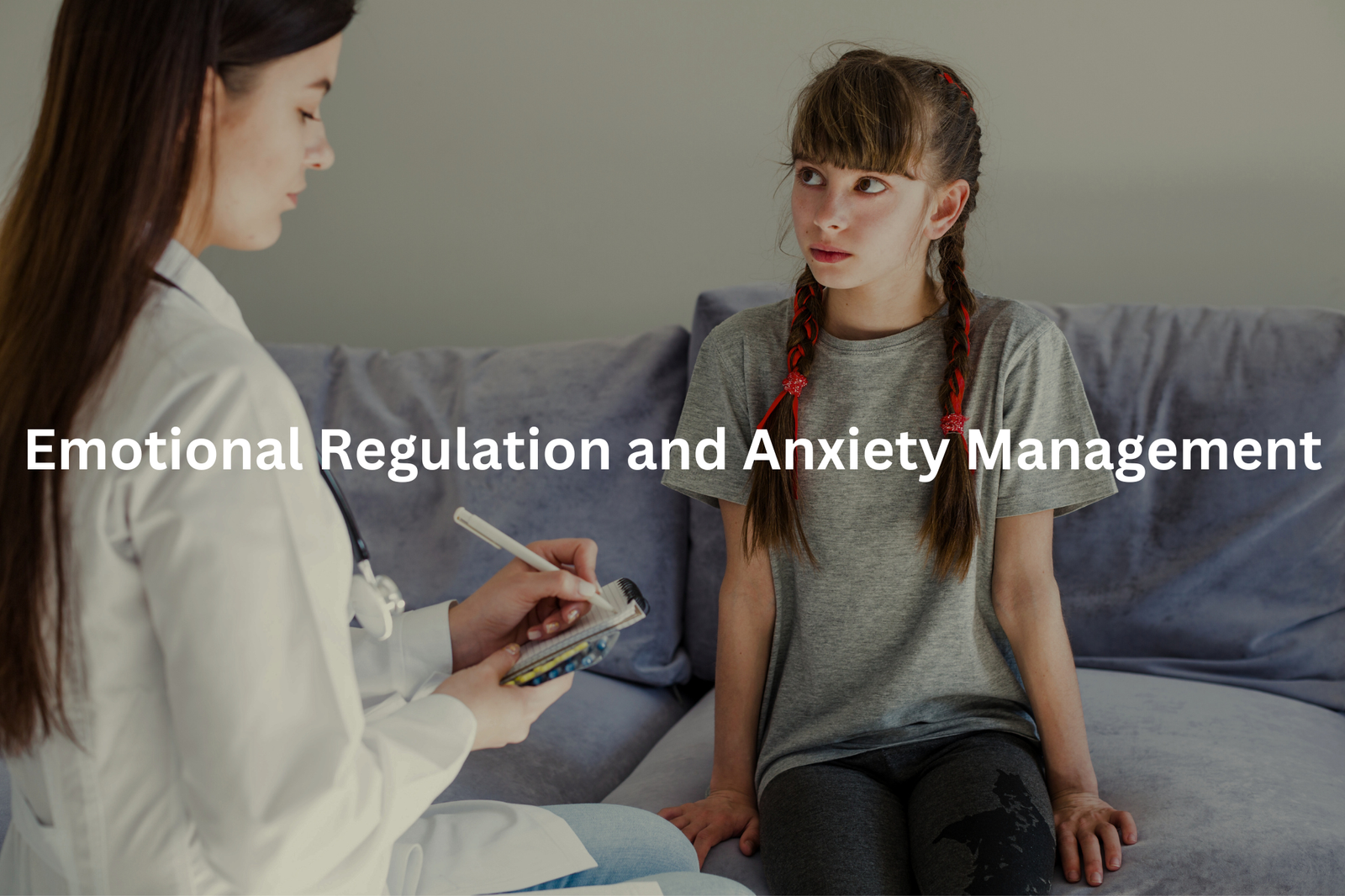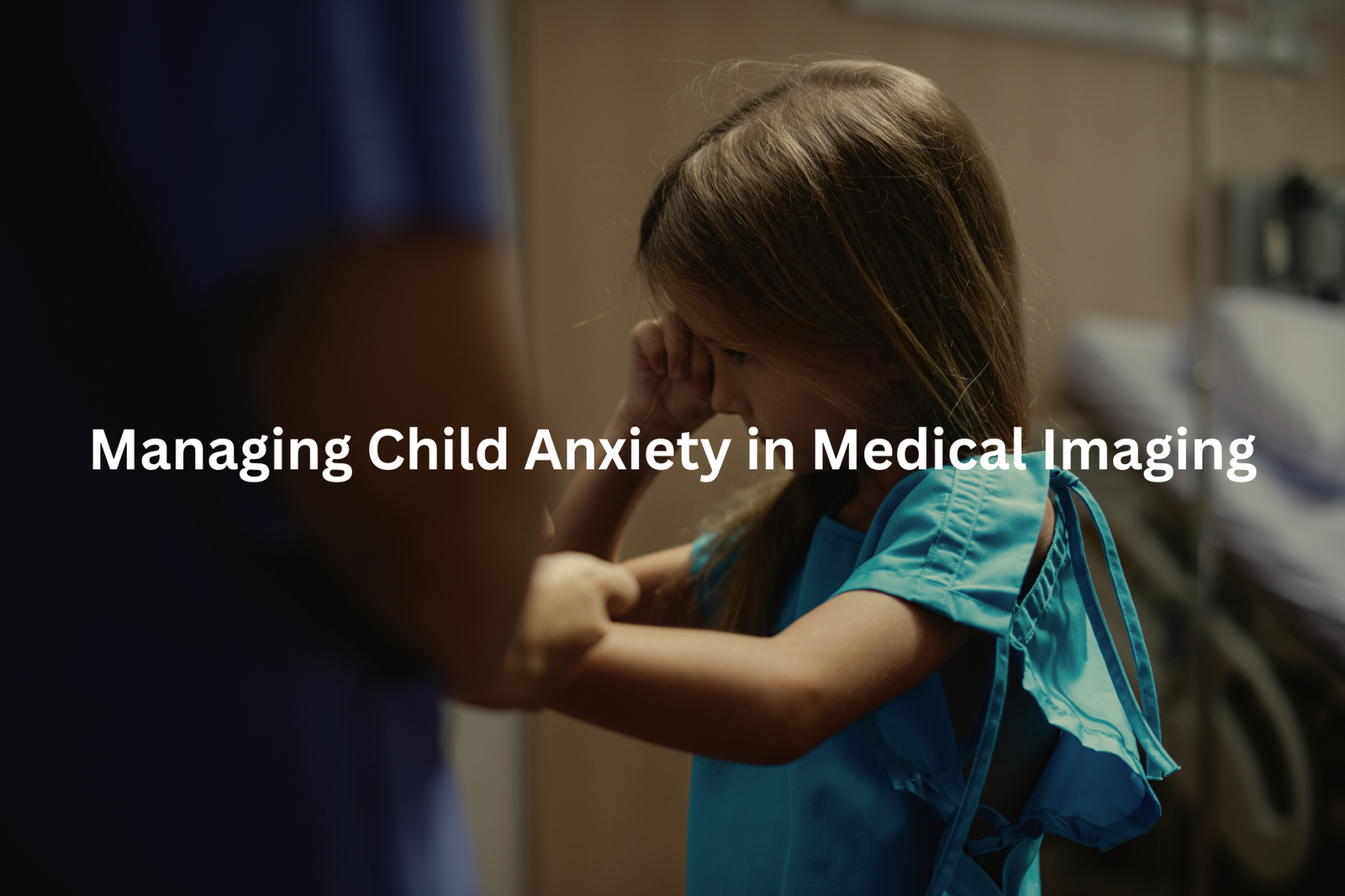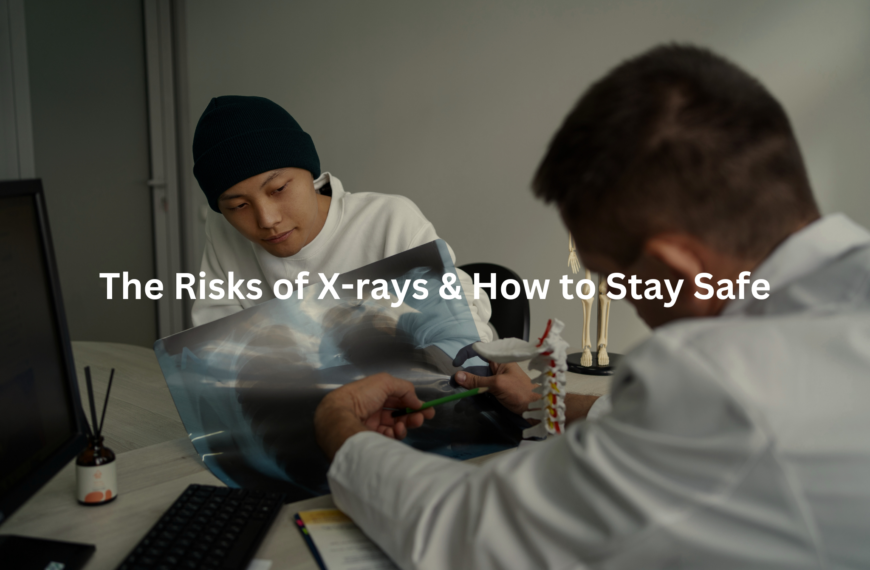Managing child anxiety in imaging is key. Discover expert-backed tips to ease fears and help kids stay relaxed for MRI and CT scans.
The loud sounds of medical machines like CT and MRI scanners can frighten kids in hospitals. Children aged 4-12 may feel scared. Doctors see that kids who learn what to expect feel better during their scans. Parents should explain the steps simply before the appointment to help ease their worries.
A soft toy or blanket from home adds comfort during the 15-45 minute scan time. Gentle breathing exercises, counting games, and quiet music through headphones help children stay still while the machine captures clear images. Keep reading for more ways to help your child feel at ease during their imaging tests.
Key Takeaway
- Talk openly about the imaging tests to reduce fear.
- Use comfort items and distraction techniques to help kids stay calm.
- Teach children grounding techniques to manage anxiety levels.
Understanding Child Anxiety in Imaging Tests
The MRI machine makes a loud humming noise in hospitals all over Australia. It’s about 2 metres long and can be as loud as 110 decibels, which is as loud as a rock concert. This can be hard for young patients.
Medical professionals recommend several proven strategies to reduce anxiety during scans(1):
- Clear explanations of the procedure using age-appropriate terms
- Visual aids showing the MRI equipment
- Comfort items from home (small toys or blankets)
- Simple breathing exercises (4-second inhale, 4-second exhale)
Children with severe anxiety or movement difficulties might need sedation, which medical staff carefully monitor. Studies show that preparation significantly reduces stress levels during imaging procedures. The medical team often uses special positioning devices and headphones to make children more comfortable.
Parents can request a practice session before the actual scan, letting kids explore the MRI room when it’s not operating. This familiarisation helps reduce fear and increases successful scan completion rates.
Preparing for the Imaging Test
Sources: MRI For Kids.
Medical imaging rooms can seem daunting for young patients. CT scanners and MRI machines can look a bit scary to kids since they’re big and noisy. But these tests are important for finding out what’s going on inside their bodies.
Healthcare staff have some good tips to help kids feel better:
- Explain the machines as special cameras that take pictures inside.
- Practice lying still for 5-10 minutes before.
- Let kids bring a comfort item like a soft toy.
- Provide entertainment like music through headphones.
- Use grounding techniques, such as naming things they see.
Most hospitals in Australia offer child-friendly imaging departments with decorated rooms and trained staff. The scanning process typically takes 15-20 minutes, depending on the type of exam. Medical teams can provide sedation if needed, though many children manage well with proper preparation.
Parents should contact their healthcare provider about specific protocols and support services available at their local facility.
Emotional Regulation and Anxiety Management

Children’s emotional responses often puzzle adults – a minor bump sparks tears while major events pass quietly. Medical procedures, particularly imaging tests, can trigger intense anxiety in young patients(2). The cold room and large machines create an overwhelming environment.
The Zones of Regulation system (developed by occupational therapist Leah Kuypers) uses colours to help kids label their feelings. Green represents calm, while red shows intense emotions. This method gives children a way to understand their emotional state.
Simple strategies help manage these big feelings:
- Deep breathing: 4 counts in, 4 counts out
- Visualization of safe spaces
- Physical movement: 30 seconds of jumping or stretching
Australian research shows 13.9% of children (about 560,000) faced mental health challenges in 2022. The pandemic increased cases of separation and social anxiety. While some kids need medical support, many benefit from learning emotional management skills. These techniques make medical visits less daunting and build lasting coping abilities.
After the Imaging Test

Medical imaging tests affect children differently. Some brush it off, while others need time to process the experience. The loud machines, staying motionless, and unfamiliar surroundings can leave lasting impressions on young minds.
Parents and carers should acknowledge their child’s bravery after the test (whether it’s an MRI, CT scan, or X-ray)(3). A small reward or simple recognition works well. Bravery shows up in many ways – sometimes it’s just staying still for 45 minutes straight.
Post-test strategies that help:
- Talking through the experience
- Physical activity to release tension
- Giving kids small choices to regain control
- Watching for stress signs like nightmares or tummy aches
Medical professionals suggest seeking support if anxiety persists. A child’s GP or counsellor can provide strategies to cope with medical-related stress. Recovery times vary between kids, and that’s perfectly normal. For future scans, kids might feel more confident knowing what helped them last time.
FAQ
How can staying calm help kids undergoing imaging tests?
Staying calm can make a big difference for kids getting imaging tests like MRI scans or CT scans. When parents or carers stay relaxed and speak in a gentle, reassuring tone, it helps kids feel less anxious. This can improve the quality of the scan images and make the overall experience better for the child. Taking deep breaths, playing calming music, and using distraction techniques are all ways to keep your child calm during the imaging procedure.
What can healthcare providers do to help manage child anxiety during imaging tests?
Healthcare providers can use a range of strategies to help manage child anxiety during imaging tests. Providing a child-friendly environment, using age-appropriate language, and allowing the child to bring a favourite toy or comfort item can all go a long way. Letting the child practise lying still on the scanner table beforehand, and using techniques like play therapy, can also help kids feel more comfortable and less anxious.
How can family members support a child undergoing an imaging test?
Family members can play a big role in supporting a child during an imaging test. Staying positive and expressing confidence in the child can help them feel less anxious. Encouraging the child to share their feelings, and providing plenty of comfort and reassurance, are also important. Family members can assist the healthcare team by helping the child follow instructions and remain still during the procedure.
What are some tips for helping children overcome anxiety about imaging tests?
There are several effective strategies for helping children overcome anxiety about imaging tests. Providing clear, honest information about what to expect can reduce uncertainty and fear. Letting the child practise the imaging procedure ahead of time, and using positive reinforcement, can also build their confidence. Seeking support from a child life specialist or mental health professional can be helpful for kids with high anxiety levels or an anxiety disorder.
How can healthcare providers create a positive experience for children undergoing imaging tests?
Healthcare providers can take steps to create a positive experience for children undergoing imaging tests. Adapting the environment to be more child-friendly, with toys, stickers, and decorations, can help kids feel comfortable. Using simple, age-appropriate language to explain the procedure, and allowing the child to ask questions, can also ease their anxiety. Letting the child listen to music or watch a movie during the scan, and providing rewards afterwards, can make the experience more enjoyable.
Conclusion
Helping kids feel less anxious during medical imaging is really important, and most hospitals in Australia use some good steps for this. First, kids should know what to expect in the scanning room, where big machines take pictures of their bodies. Parents can help by practicing deep breaths, bringing a favorite toy, and staying close. Medical staff use models and easy words to explain everything, making it less scary for young patients.
References
- https://www.insideradiology.com.au/childs-test-less-stressful/
- https://www.mcri.edu.au/research/projects/peers-study
- https://www.nps.org.au/consumers/imaging-and-children




